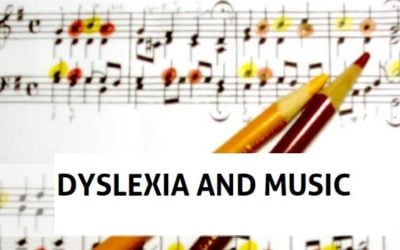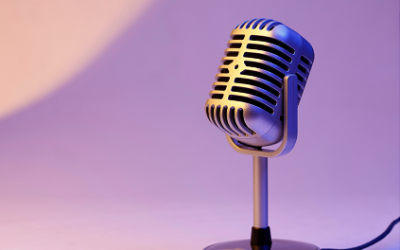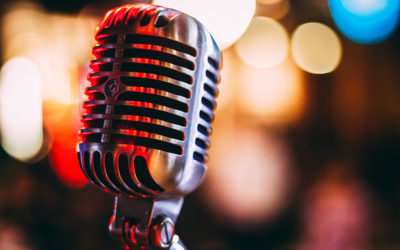"I'm dyslexic, so the notes just jump out at me. It's the same with words too. That's why the Key Editor in Cubase is the best thing for me as I see things in shapes and colors." — Grammy Award-winning composer producer Lorne Balfe Here in the United States, it's...
Florence Welch + The Machine Singer-Songwriter [Premium]
“Being a creative person and getting older, and wiser, has been an awakening. The older I get, the more self-assured I feel and the more confident I feel in my work and in life.” — Florence Welch Florence Welch is an English singer-songwriter who writes and sings songs that are steeped in folklore and fantasy imagery. She has spoken both about her dyslexia and dyspraxia in various interviews. Florence became a pop star at the age of 21 when she was discovered singing in a club bathroom. She would go on to have Grammy nominations and platinum records, but also had some tumultuous times with heartbreak. One of her breakthrough songs was Ship to Wreck (lyrics), after the breakup of a long term relationship. […]
Singer Tony Bennett’s Last Concert
"To me, life is a gift, and it's a blessing to just be alive. And each person should learn what a gift it is to be alive no matter how tough things get." — Tony Bennett Tony Bennett really sounds great at 95 years old. Check out his duets with Lady Gaga below....
Music And Dyslexia: Chat with Sally Daunt, Chair of the Music Committee of the BDA [Premium]
Recently, I had a wonderful opportunity to chat with Sally Daunt, Chairwoman of the Music Committee of the British Dyslexia Association. We had been corresponding about dyslexia and choral groups and Sally had asked about how dyslexic strengths can manifest themselves in choral groups where singers had to fit into tightly controlled schedules of music, extensive sight reading, and music performances which could have limited opportunities for musical interpretation. From my discussion with Sally: “Many dyslexic musicians have difficulty with sight reading – and perhaps cathedral choirs might consider whether an absolute requirement is necessary in the audition process. Some who have difficulty with sight reading might be able to pick music up quite quickly having heard a version once. In theater companies, […]
The Remarkable Maya Hawke
Maya was recently interviewed by Scott Simon for NPR and we loved that she pushed back on the phrase "suffer with dyslexia": "SIMON: I have read that your - that you suffer from dyslexia. HAWKE: I wouldn't say suffer. I would say it is, like, one of the great...
SING! Dyslexia and Song
What is the connection between dyslexia and music? If you ask some families, dyslexia and musical talent go hand-in-hand. There can also be challenges in music, in particular with reading music; however, the strengths can be seen in areas such as musicality,...
Beautiful Minds – What New Research Shows Dyslexia and Artists Have in Common [Premium]
BBC Science: “…artists had increased neural matter in areas relating to fine motor movements and visual imagery. The research, published in NeuroImage, suggests that an artist’s talent could be innate…these detailed scans revealed that the artist group had significantly more grey matter in the area of the brain called the precuneus in the parietal lobe.” From Cerebral Cortex 25:3502-3514: “we found that connectivity between multiple reading-related areas and areas of the default mode network, in particular the precuneus, was stronger in dyslexic compared with nonimpaired readers.” In an interesting study comparing drawing ability and enrollment in art student group with structural brain studies examining brain matter density in specific areas, researchers found greater representational art ability and enrollment in an art school (Royal College of Art […]
Singer Songwriter Freya Ridings
"I struggled so much at school with dyslexia, and I really found it so difficult in so many ways. When I found music, it just became an anchor that got me through the hardest school years...I couldn’t read music, and all my music teachers gave up on me one by one...
Music and Dyslexia [PREMIUM]
For our last book, it was when we were getting ready to wrap up our interview with compact disk inventor James Russell, when the question “But when are you going to ask me about music?” came up. Music, we learned was a huge part of Jim Russell’s life (and still is) and interest in inventing that eventually lead to his electronic work (Jim was an audiophile who helped set up a complete commercial radio station before he graduated high school). Since that time, we often had folks mention how important music was to them either recreationally or professionally and we recognized the talents in children as well. One need not look far back into music history to find suggestions that some of the most famous […]
Gwen Stefani The Voice and Dyslexia
"It was such a turning point to find that I had a talent and I had something to contribute, somewhere." - Gwen Stefani, singer, songwriter, fashion designer, actress As a child, Gwen was very creative, performing puppet shows for friends and neighbors with her...
This is Your Brain on Phonics – fMRI and Dyslexia [Premium Subscription]
One of the greatest neuromyths about dyslexia is that it’s just about reading. Kudos to the Gabrieli lab (and many others) who are unraveling the differences that exist between dyslexic and non-dyslexic children because the science can inform us about what we may need to do as teachers and tutors. In the following article, we’ll share recent brain research that shows that dyslexic children ‘hear’ or processing sounds differently. Instead of activating a left hemispheric area, they activate the right temporoparietal cortex, a part of the brain important for multisensory integration and imitation. ** To read more, log into your Premium account or become a Premium Subscriber here or. Thank you for your support!


![Florence Welch + The Machine Singer-Songwriter [Premium]](https://www.dyslexicadvantage.org/wp-content/uploads/2022/12/Florence-Welch-Dyslexic-Advantage.jpg)

![Music And Dyslexia: Chat with Sally Daunt, Chair of the Music Committee of the BDA [Premium]](https://www.dyslexicadvantage.org/wp-content/uploads/2021/07/Music-400x250.jpg)


![Beautiful Minds – What New Research Shows Dyslexia and Artists Have in Common [Premium]](https://www.dyslexicadvantage.org/wp-content/uploads/2019/08/shutterstock_255430702.jpg)

![Music and Dyslexia [PREMIUM]](https://www.dyslexicadvantage.org/wp-content/uploads/2024/01/piano-music-400x250.jpg)

![This is Your Brain on Phonics – fMRI and Dyslexia [Premium Subscription]](https://www.dyslexicadvantage.org/wp-content/uploads/2016/01/shutterstock_229039786.jpg)













